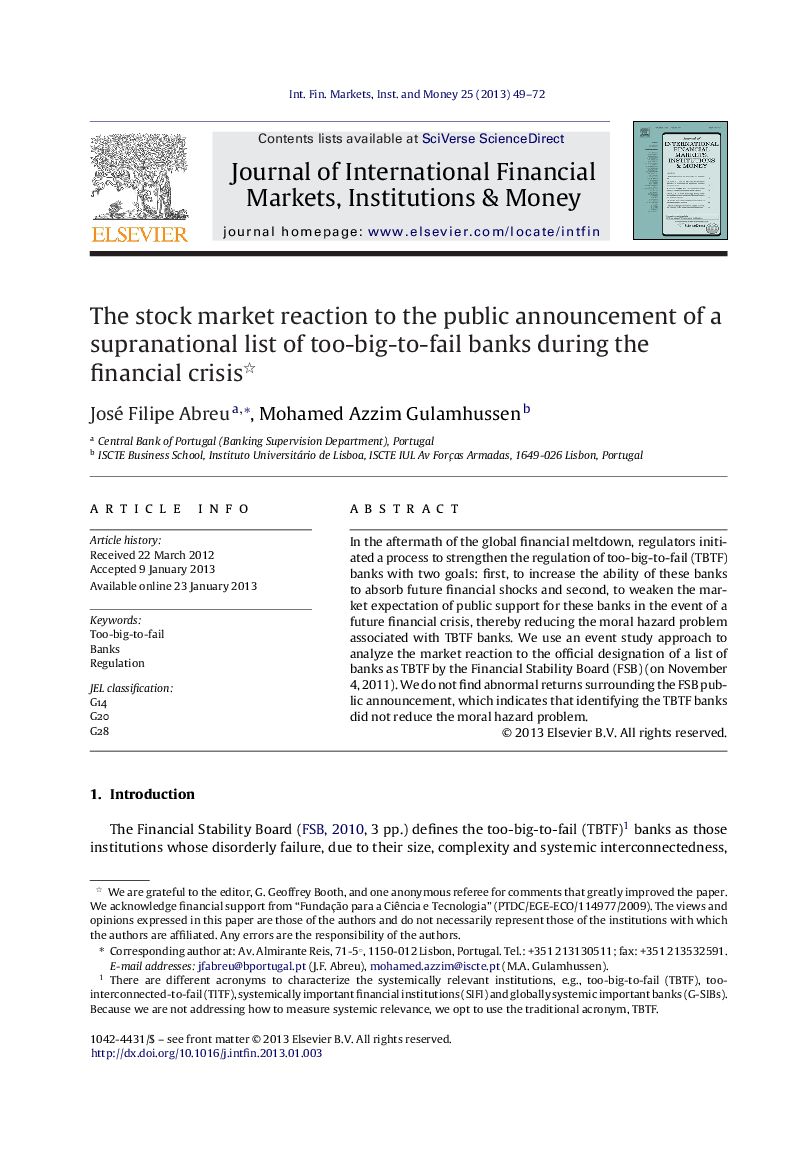| Article ID | Journal | Published Year | Pages | File Type |
|---|---|---|---|---|
| 964041 | Journal of International Financial Markets, Institutions and Money | 2013 | 24 Pages |
In the aftermath of the global financial meltdown, regulators initiated a process to strengthen the regulation of too-big-to-fail (TBTF) banks with two goals: first, to increase the ability of these banks to absorb future financial shocks and second, to weaken the market expectation of public support for these banks in the event of a future financial crisis, thereby reducing the moral hazard problem associated with TBTF banks. We use an event study approach to analyze the market reaction to the official designation of a list of banks as TBTF by the Financial Stability Board (FSB) (on November 4, 2011). We do not find abnormal returns surrounding the FSB public announcement, which indicates that identifying the TBTF banks did not reduce the moral hazard problem.
► After the financial crisis, a process to re-regulate too-big-to-fail (TBTF) banks was initiated. ► We analyze the market reaction to the labeling of banks as TBTF by the FSB. ► We expected a negative market reaction for TBTF banks due to the more stringent regulatory framework. ► We do not find evidence of abnormal returns for both the TBTF banks, and their peer group. ► Our results indicate that markets still recognize a positive value for the TBTF label.
